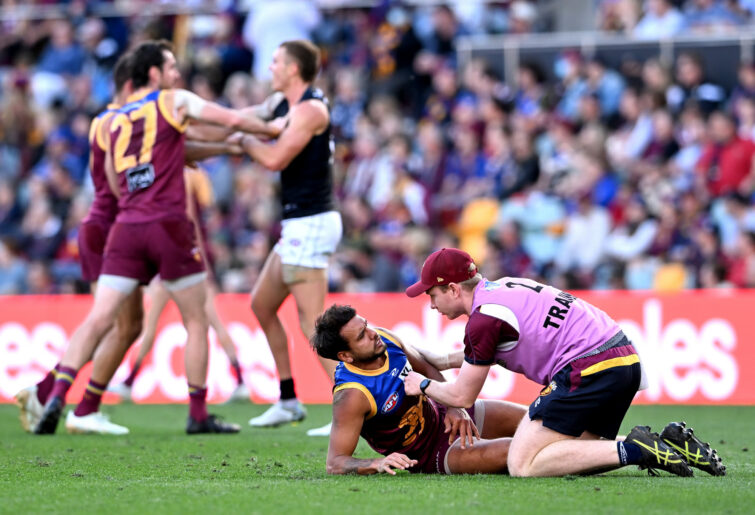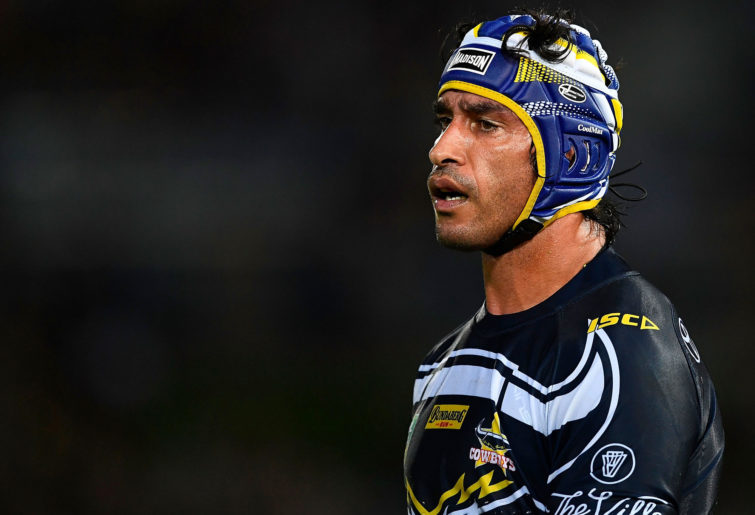
[ad_1]
The medium and long term effects, whilst not fully understood, can have a major impact on the livelihoods and wellbeing of current and past players and by extension, their families, long into retirement.
We hear constantly that players have a responsibility and a duty of care to ensure they are not endangering their opponents when entering each contest and we are starting to see several players that are being suspended for acts that are, in majority of instances, unintended.
The message being intent is not the only factor that is being considered by the MRO and AFL tribunal.
This strategy has been the obvious starting point for the AFL, as essentially, this message starts to drive and change player behaviours. The very nature of AFL however means that there are still players suffering concussions, and in many of these situations, are not due to what we would call a suspend-able offence.
After all, AFL is a full contact sport and all players that enter the arena, do so knowing that there is potential for harm.
So, merely suspending players, or more importantly, warning players that any contact with an opponent’s head in an act that is not considered reasonable, may result in a suspension, is only really touching the tip of the iceberg.
Yes, it is important that players are aware of the consequences should they choose to bump or tackle an opponent in a way that may, intentionally or unintentionally, cause a player to be concussed.
No arguments here on that. But is this enough? We all love the high mark which is a feature of our game that we never want to see taken out of the game however what happens if the player taking the mark sticks their knee into the back of their opponents head to take the mark.
Nobody has done anything wrong however there is potential for serious injury.

Callum Ah Chee is attended to by Brisbane trainers. (Photo by Bradley Kanaris/Getty Images)
I agree that the AFL and the member clubs are now treating concussions more seriously and have implemented world leading processes in place to treat players that are showing signs of symptoms relating to concussions.
We are seeing those decisions on whether to play or not being taken out of the hands of the coaches and more importantly the players themselves and left with medical professionals which can only be a step in the right direction.
But these measures, as important as they are, are reactionary and again, I ask, is this enough?
At what stage do the players also need to take responsibility and a duty of care for their own well-being and safety?
We constantly highlight and revere those players that go back with the flight of the ball into a contest and even greater is our admiration of that player where they are hurt in the action.
How brave must these players be to do this for the benefit of the team, right? I think of some of the players that are widely accepted as being the toughest competitors in the AFL. In the generation of players in my time watching this great game, players like Luke Hodge and Joel Selwood immediately spring to mind.
I’m not advocating for the game to be changed to no contact as I love the physical nature of the contest as much as anyone. I personally feel that the players today are in more danger of injury than in past era’s simply because of the speed of the game and how fit these footballers are.
So, what is my point you may ask?
Protective equipment. It is widely accepted that most players wear a mouthguard. Makes sense as the last thing you want is for their pearly whites to be knocked out.
Think back to those images of Luke Jackson at the back end of last year doing an interview without his front teeth. Ruckmen are now also starting games with shin pads and thigh pads in some instances. Even players that are pinch-hitting in the ruck are using these shin pads.
The AFL has standards on how hard the playing surface can be to reduce leg injuries. Even the goal and point posts are padded to avoid player injury.
My point in all of this is, why are there so few players in the AFL wearing head gear? If concussion is such a major topic and talking point for the AFL, why are we not seeing an increase in the number of players protecting themselves, by wearing head-gear?
As someone who grew up watching footy predominantly from the 80s, there are some amusing images of the different styles of head-gear that have been rolled out by various players.
The most famous one being the “Chief” Jason Dunstall’s effort after he suffered a major head injury. I also remember back to the WAFL days with players such as Phil Narkle sporting the big Motorbike style helmet while playing for Swan Districts.
We move to the current crop of players, and I can only think of 2 that spring to mind that wear head gear. Angus Brayshaw and Caleb Daniel.
Apologies if I have missed any others but the point is that they are in the minority. Even Paddy McCartin, who has resurrected his career this season with Sydney after it was felt that he may never play again due to concussion, doesn’t wear head gear.
I can’t understand why more players are not taking concussion more seriously themselves and choosing to wear head gear. In fact, I can’t understand why at a junior/grassroots level, wearing head gear is not compulsory?

Could AFL see rugby-style headgear? (Photo by Ian Hitchcock/Getty Images)
The obvious reason that a player wouldn’t wear head gear would most likely be comfort however if head gear was mandatory at junior levels through to U18’s, surely they would become accustomed to way it feels.
I realise that head-gear may not rule out concussions totally however how many times have Angus Brayshaw and Caleb Daniel been concussed since wearing the head gear?
In my opinion, it seems a no-brainer (no pun intended). We see mandatory protective gear in several workplaces. Try getting on a building site without a hard hat. So why not the AFL?
I acknowledge that there is no scientific evidence currently that suggests that head gear would prevent concussions. I assume this would be the same regarding bike helmets, but these are mandatory when riding a bicycle.
There is also an argument that by making juniors wear the head gear, it would change the way they play, and they would be more willing to take risks than they would without the head gear.
These points are well made but in conjunction with the other measures the AFL is taking to improve player safety around concussions, surely this should be another option being considered.
Ultimately, until such time as the AFL decide to mandate the head gear, it remains the choice of the players. The modern type of head gear is more aesthetically pleasing and I’m sure the comfort levels are better than they were back in Phil Narkle’s days.
Despite the look, the players in my opinion need to start accepting the responsibility that their workplace can be dangerous to their health and well being and therefore protective gear must be a viable option.
I’m not suggesting that the AFL mandates this for all players however there is no reason whatsoever why this couldn’t be implemented at Juniors which in turn will no doubt see more players at the elite level wearing the head gear. This wouldn’t be a bad outcome, would it?

Leave a Reply